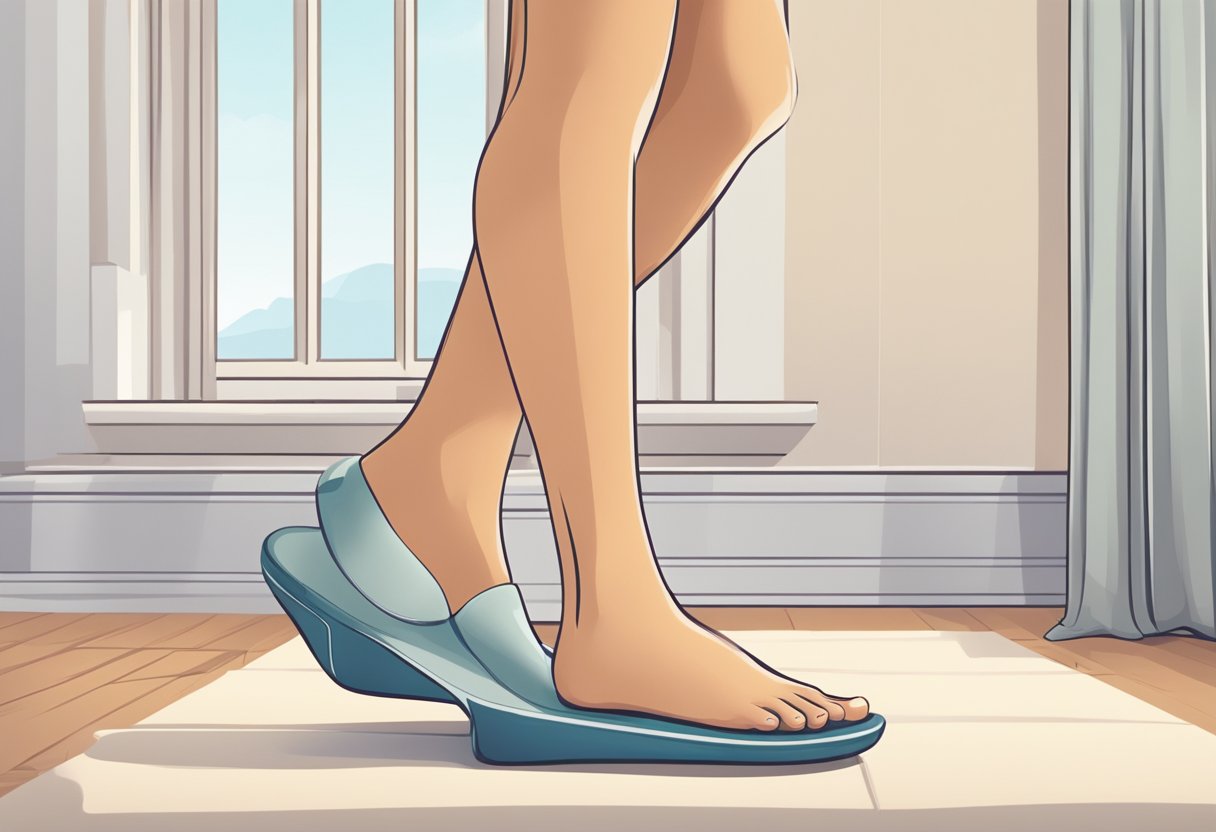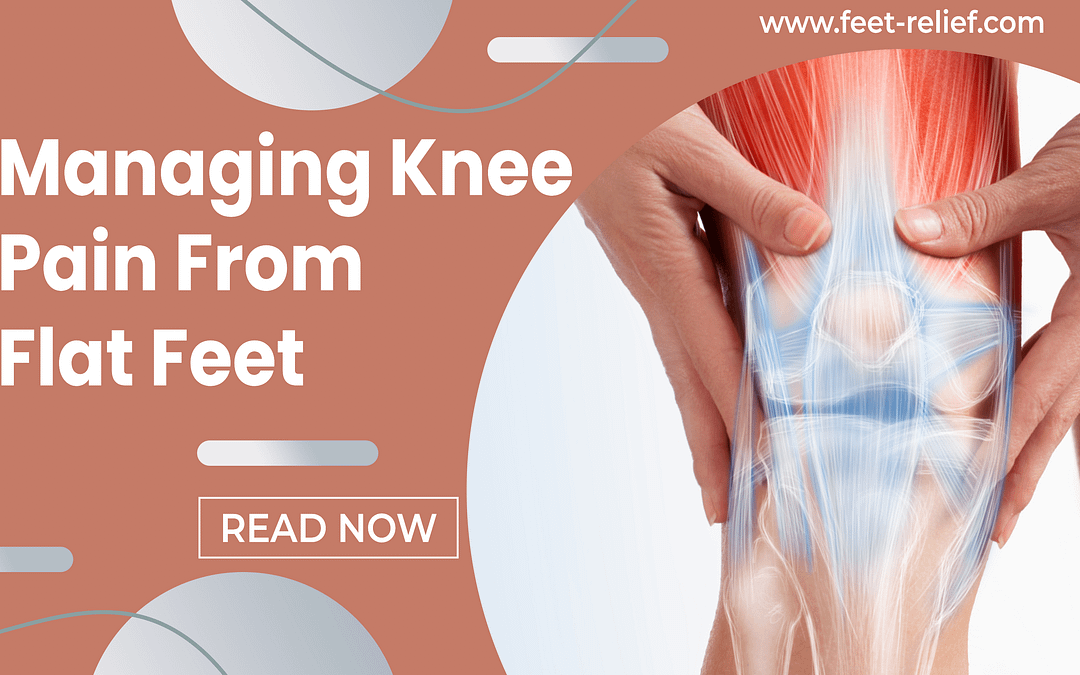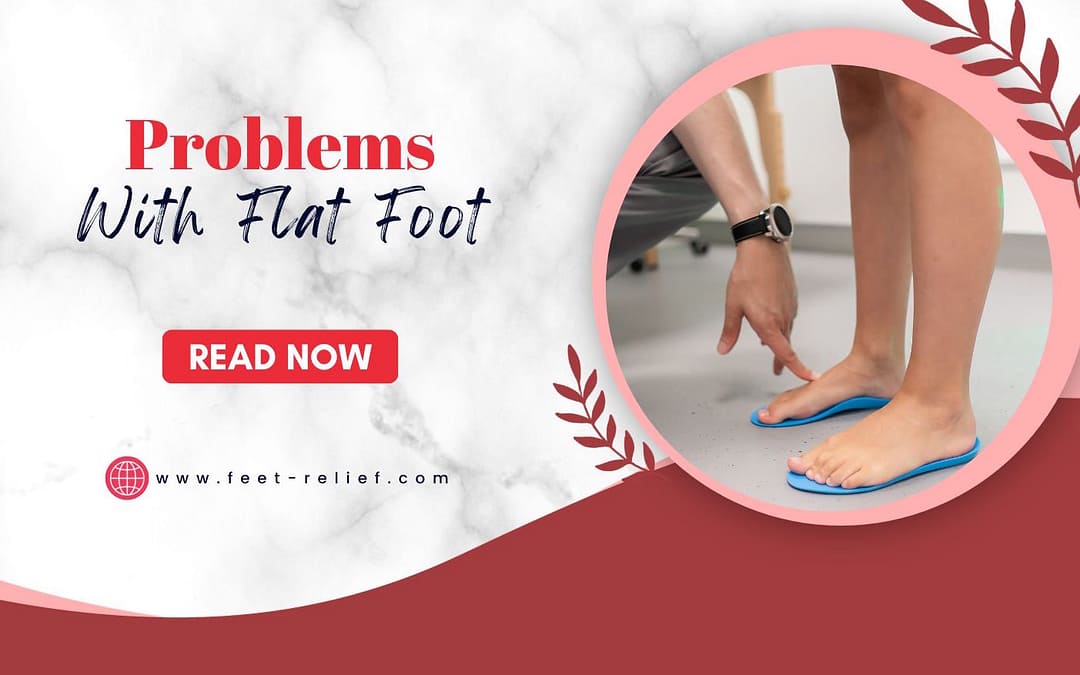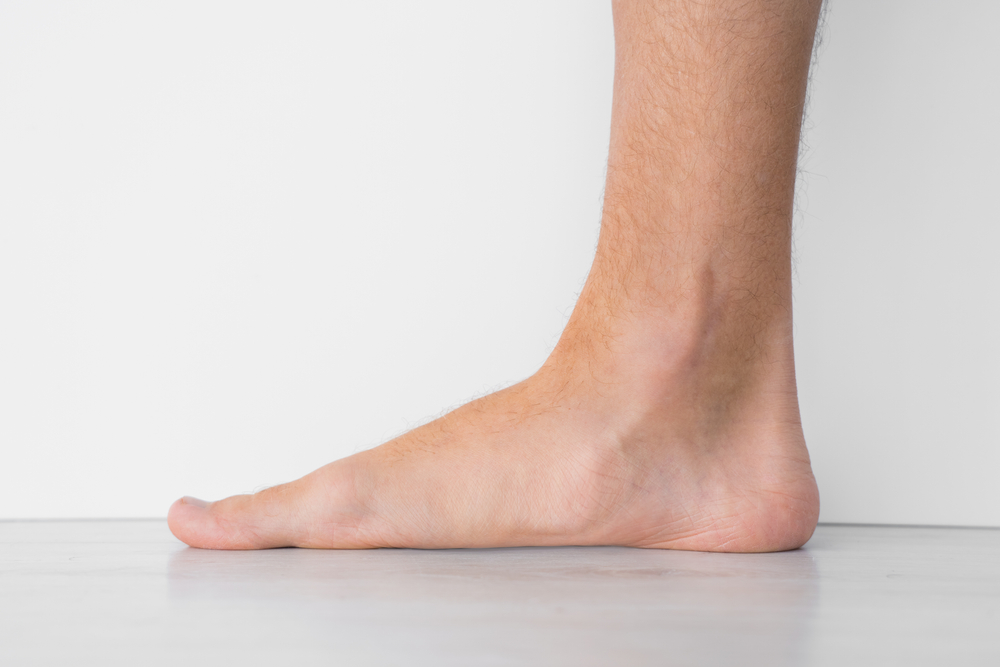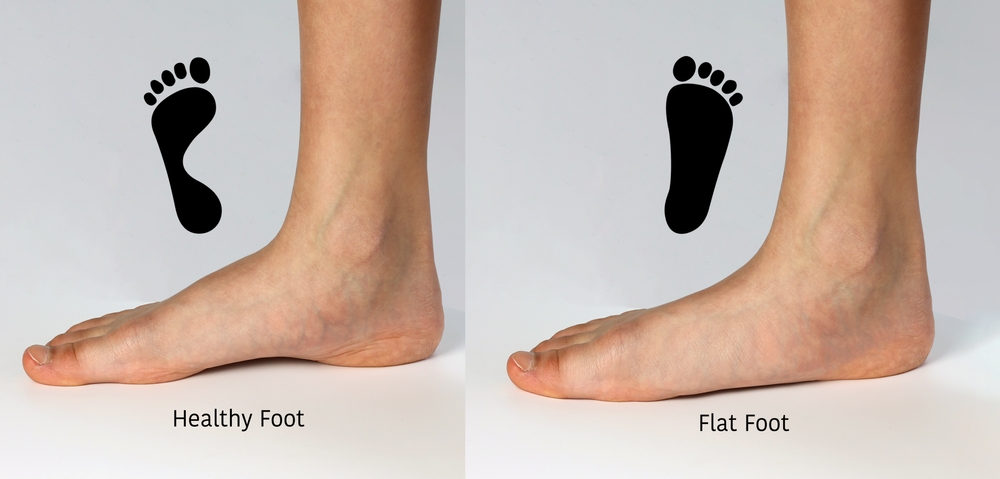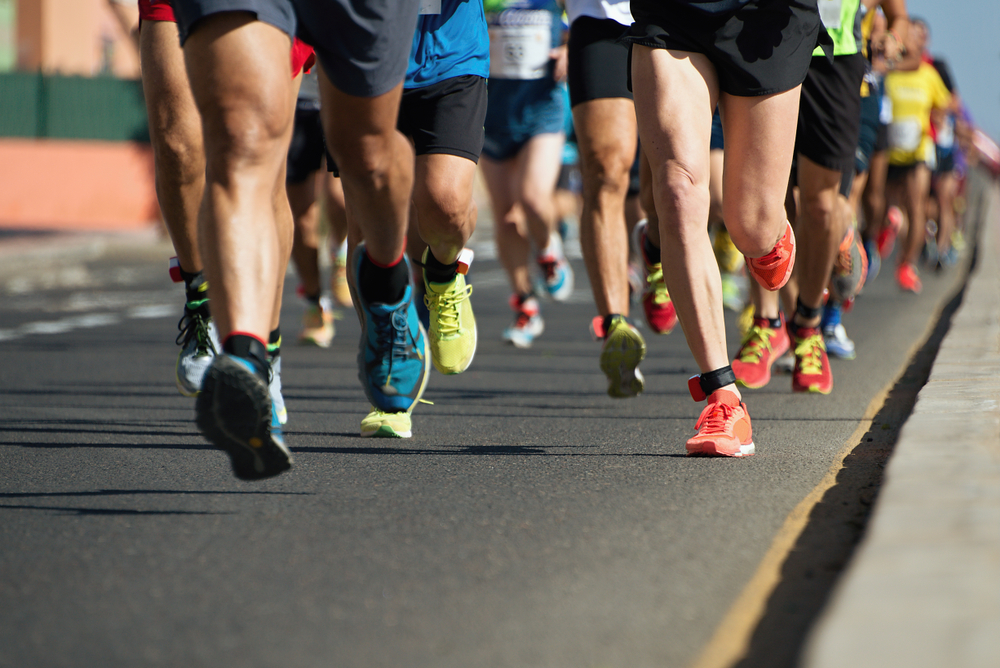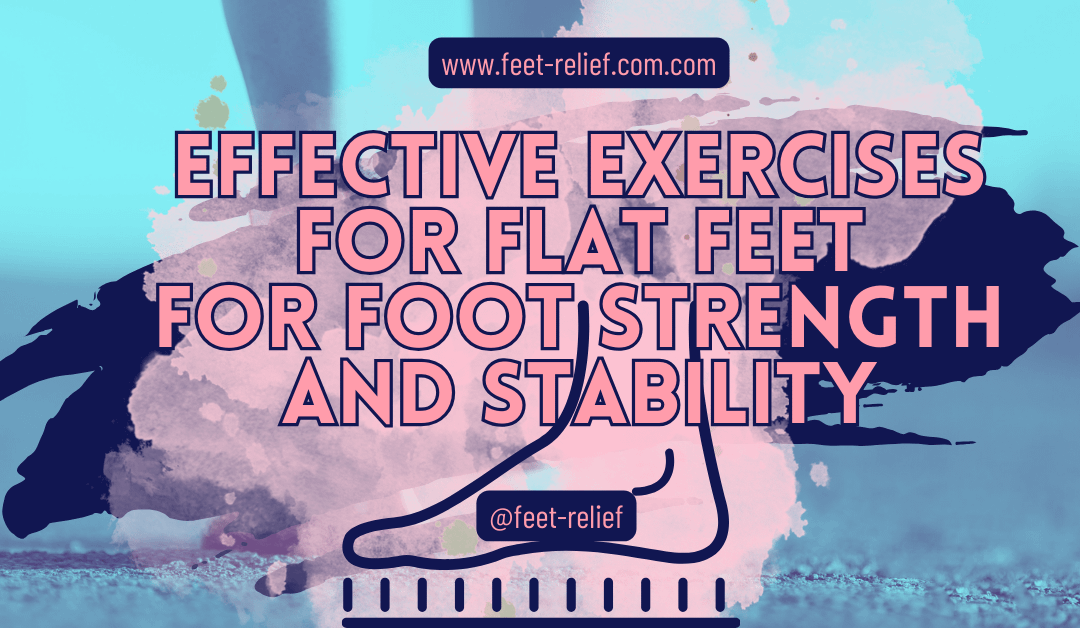
Effective Exercises for Flat Feet For Foot Strength and Stability
Flat feet, a condition where the arches of the feet are flattened, affect a considerable number of individuals, potentially leading to discomfort and an altered gait. This physical trait can result from factors such as genetics, injury, or arthritis. The absence of a normal arch can cause overpronation, which is when the ankles roll inward while walking, resulting in additional strain on the feet and body. However, with targeted exercises for flat feet, it is possible to improve foot strength and alleviate some of the discomfort.

Exercises and stretches specifically designed for flat feet can help in improving arch function and flexibility, thereby reducing pain and enhancing overall foot health. Strengthening exercises focus on the muscles around the arch and the foot’s underside, while flexibility routines stretch the Achilles tendon and calf muscles, which are often tighter in people with flat feet. Besides exercises, choosing supportive footwear and considering physical therapy can also play vital roles in managing the symptoms related to flat feet.
Key Takeaways
- Strengthening and stretching exercises can enhance foot health for individuals with flat feet.
- Supportive footwear and physical therapy are important for managing flat feet discomfort.
- Regular exercise and lifestyle adjustments contribute to reducing the impact of flat feet.
Understanding Flat Feet

Before exploring exercises beneficial for flat feet, it’s essential to grasp what this condition entails, its origins, and how it can affect your overall health and fitness.
Anatomy of the Foot
Your foot’s architecture is a marvel of evolution, comprising of bones, tendons, and ligaments. A key component is the arch, which serves as a natural shock absorber. Flat feet signify a decrease in or absence of the normal arch when you’re standing.
Causes of Flat Feet
Flat feet can be congenital, present from birth, or develop over time due to stress or injuries. Contributing factors may include the natural aging process, excessive weight, or medical conditions such as diabetes and rheumatoid arthritis.
Impact on Health and Fitness
Flat feet can lead to a cascade of changes in your gait, which might result in pain and discomfort in the feet, ankles, knees, hips, and back. This condition might also compromise your balance and stability, potentially affecting your participation in certain physical activities.
Assessment Techniques
Before addressing exercises for flat feet, it’s crucial to accurately assess whether you have flat feet and understand their impact on your gait and overall foot health.
Identifying Flat Feet
Flat feet are typically characterized by a lack of visible arch when you stand. Your foot may appear to flatten to the ground, and you can identify this condition by observing the inner part of your foot while standing. An either low or absent arch suggests you may have flat feet.
Gait Analysis
Gait analysis involves a detailed examination of how you walk or run. It provides insights into your biomechanics and can reveal problems such as overpronation, where the foot rolls inward excessively. You can perform a basic gait analysis by observing the wear patterns on the soles of your shoes or seek a professional assessment at a clinic or specialty running store.
Footprint Test
To perform a footprint test, wet your feet and stand on a surface that will show your footprint, like a concrete walkway or a piece of heavy paper. A complete imprint of the bottom of your foot indicates flat arches. The more of your foot’s sole that’s visible, the flatter your foot likely is.
Professional Diagnosis
If you suspect you have flat feet, a professional diagnosis is advisable. A healthcare professional can perform a series of tests, including imaging like X-rays, to assess the structure of your feet and determine any underlying causes or associated conditions that require attention. A professional diagnosis will guide you in choosing the right exercises and treatments.
Strengthening Exercises
Video Credit: @toneandtighten
Incorporating specific strengthening exercises into your routine can help improve the structure and function of your flat feet.
Arch Lifts
To perform arch lifts, sit with your feet flat on the ground and focus on lifting the arch of your foot while keeping your toes and heel planted. This exercise targets the muscles that support your arch.
Toe Raises
Standing with your feet flat, lift all your toes off the ground, then slowly lower them back down. These toe raises help strengthen the muscles in your feet’ bottoms and arches.
Heel Stretches
Heel stretches involve stretching the calf muscles, which can help prevent tightness that contributes to flat feet problems. Stand facing a wall, extend one leg behind you, and gently press your heel to the floor until you feel a stretch in your calf.
Ankle Inversions
Lie on your back with your feet in the air and rotate your ankles so that the soles of your feet face each other. The action of ankle inversions works on the tendons and muscles on the inside of your ankles and can help build support for your arches.
Stretching and Flexibility
Video Credit: @Uprighthealth
In managing flat feet, incorporating specific stretches and exercises can enhance foot flexibility and strengthen the muscles supporting your arch. These stretches target the calf, plantar fascia, and toe flexors, which are vital for foot health.
Calf Stretches
Tight calf muscles can exacerbate flat feet by increasing the strain on your arch. To perform a calf stretch:
- Stand facing a wall with one foot in front of the other.
- Keep your back leg straight and the heel on the ground.
- Lean forward until you feel a stretch in the lower part of your back leg.
- Hold for at least 30 seconds, then switch legs.
Plantar Fascia Stretch
The plantar fascia, a band of tissue that runs along the bottom of your foot, can be stretched to relieve tension and pain. For a plantar fascia stretch:
- Sit with one leg over the other.
- Use your hand to pull the toes back on your elevated foot gently.
- Keep pulling until you feel a stretch along the bottom of your foot.
- Hold the stretch for 15-30 seconds, then repeat with the other foot.
Toe Flexor Stretches
Strengthening the muscles in your toes can help support your arches. Try these toe flexor stretches:
- Place a towel on the floor and use your toes to scrunch it toward you.
- Keep your heel planted while you gather the towel, feeling the muscles in your arch work.
- Release and repeat the motion for several repetitions.
Supportive Footwear
Video Credit: @BobandBrad
Selecting the correct footwear is essential in managing flat feet. Proper shoes and orthotic aids can significantly improve foot support and alleviate discomfort.
Choosing the Right Shoes
For flat feet, choosing shoes that provide adequate arch support and stabilization is crucial. Your shoes should have a firm heel counter to control heel motion and a straight or semi-curved last to help manage pronation. According to a podiatrist, features like metatarsal pads are also beneficial as they redistribute pressure across the feet.
Orthotic Insoles
Custom or over-the-counter orthotic insoles can make a vast difference. These insoles should match your foot arch’s contours and provide support where needed.
They can also correct the alignment of your foot and distribute pressure more evenly. For many, insoles are an effective solution to improve foot function without the need for surgery.
Footwear Tips for Flat Feet
- Fit: Ensure a thumb’s width of space in the toe box and a snug fit around the midfoot.
- Quality: Invest in high-quality materials that accommodate the shape of your feet.
- Variety: Rotate your shoes regularly to reduce wear patterns and promote foot health.
Remember to replace your shoes and insoles as recommended to maintain optimal foot support.
Physical Therapy and Treatment
Video Credit: @RehabRevive
In managing flat feet, your treatment may range from conservative methods like custom orthotics and targeted physical therapy exercises to, in rare cases, surgical intervention.
Custom Orthotics
Custom orthotics are tailored insoles designed to support your unique foot structure. Wearing them provides the biomechanical support your feet might lack, alleviating discomfort and improving function. Orthotics can redistribute pressure and provide the arch support necessary to mitigate the symptoms associated with flat feet.
Physical Therapy Practices
Implementing physical therapy practices can strengthen your foot and ankle muscles, enhance flexibility, and improve your overall foot mechanics. A physical therapist may demonstrate exercises to target the Achilles tendon and the intrinsic foot muscles, which support the arch, and recommend a regimen that includes:
- Arch lifts and heel raises to improve strength
- Stretches for the calf and heel cords to enhance flexibility
Surgical Options
While not commonly required, surgical options exist for severe or persistent cases where orthotics and physical therapy don’t lead to significant improvement. Surgery may involve reconstructing the arch or repairing tendons and is targeted to restore functionality and relieve pain. Your healthcare provider will typically explore all non-surgical treatments before recommending surgery as a course of action.
Preventative Measures

In tackling flat feet, prevention is as crucial as treatment. Addressing weight, walking techniques, and exercises early on can significantly diminish the likelihood of developing flat feet.
Maintaining a Healthy Weight
Your feet bear the burden of your body weight. Keeping this weight within a healthy range reduces the stress on your arches. Even a small amount of weight loss can alleviate pressure on your flat feet if you’re over the threshold.
Proper Posture and Walking Technique
It’s important to focus on how you stand and move. Proper posture and walking technique help distribute weight evenly, which can prevent your arches from collapsing. When walking, make sure your feet are pointing straight ahead, not turned in or out, and your body weight rolls from heel to toe.
Lifestyle Modifications
Making lifestyle modifications is crucial to managing flat feet. These adjustments can help alleviate discomfort and improve foot function.
Daily Habits
- Choose the Right Footwear: Invest in shoes with good arch support and a cushioned sole to reduce strain on your arches.
- Weight Management: Maintain a healthy weight to decrease the pressure on your feet and prevent further arch collapse.
Avoiding Aggravating Activities
- Limit High-Impact Sports: Avoid activities like jumping or running on hard surfaces that can exacerbate foot pain.
- Posture Correction: Practice standing and walking with proper posture to distribute your body weight evenly across your feet.

Wrapping It Up
Exercises for flat feet can improve strength and stability. Try arch lifts, heel stretches, and toe yoga. Do them regularly for the best results. Wear supportive shoes as well.
If pain persists, consult a healthcare professional. Remember, consistent effort can make a big difference. Strengthen your feet for better comfort and mobility!
Frequently Asked Questions
What types of exercises can help rebuild the arches in flat feet?
Strengthening exercises like heel stretches, arch lifts, and toe raises are effective in rebuilding the arches in your feet. They work by enhancing muscle strength and flexibility in the foot.
Are there any before and after comparisons available showcasing the effectiveness of exercises for flat feet?
Documented before and after comparisons may not be widely available, as individual responses to exercise can vary. However, anecdotally, many people report improvement in arch height and pain reduction with regular, consistent practice.
Is it possible to correct flat feet in adults through specific exercises?
While you can’t completely change the structure of adult flat feet, specific exercises can improve foot function and reduce symptoms. Consistency in exercises is key to seeing potential benefits.
What exercises can someone do at home to help improve flat feet?
You can perform exercises like tennis or golf ball rolls, towel curls, and calf raises at home to help improve the condition of flat feet. These exercises contribute to strengthening the muscles and improving arch support.
What is the recommended age to start exercises for children with flat feet, and what are the most effective ones?
Exercises for children with flat feet can begin as soon as a concern is identified, often around age 6 or 7. Effective exercises include heel stretches and arch raises, which help in developing the foot’s arch muscles.
Does incorporating toe-walking into a fitness routine assist in managing flat feet?
Incorporating toe-walking into your fitness routine can be beneficial. It encourages the intrinsic foot muscles to engage, which assists in managing flat feet.


